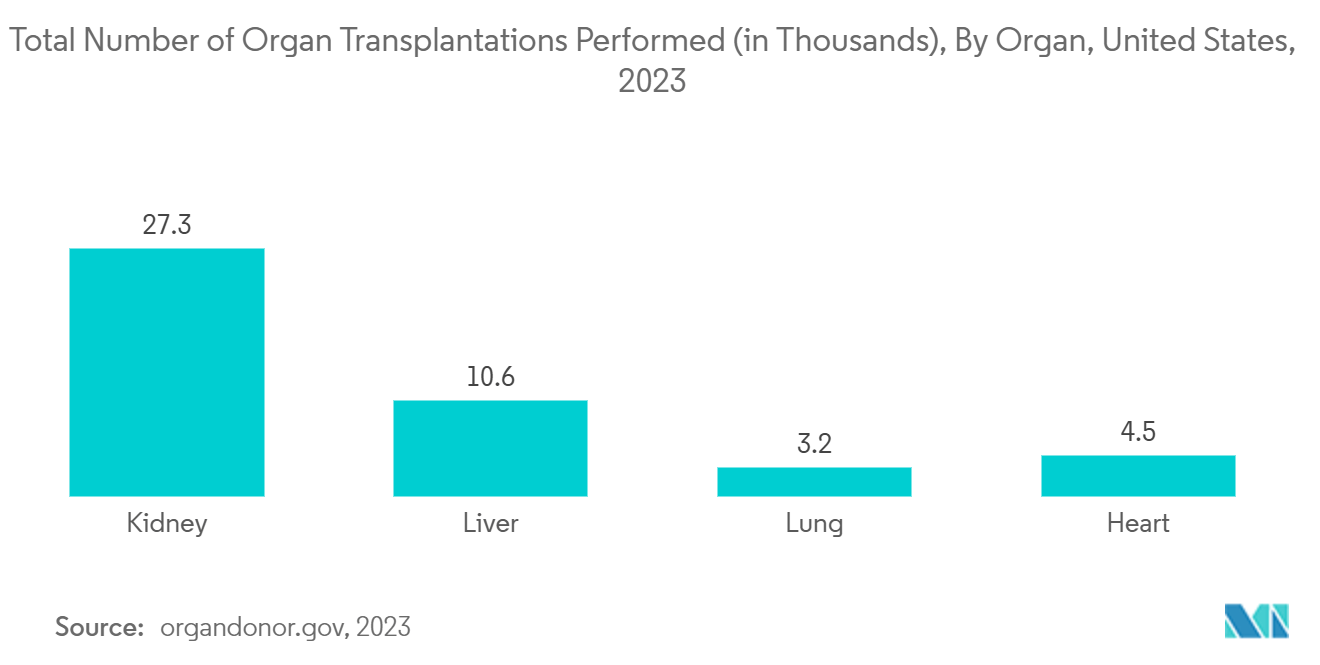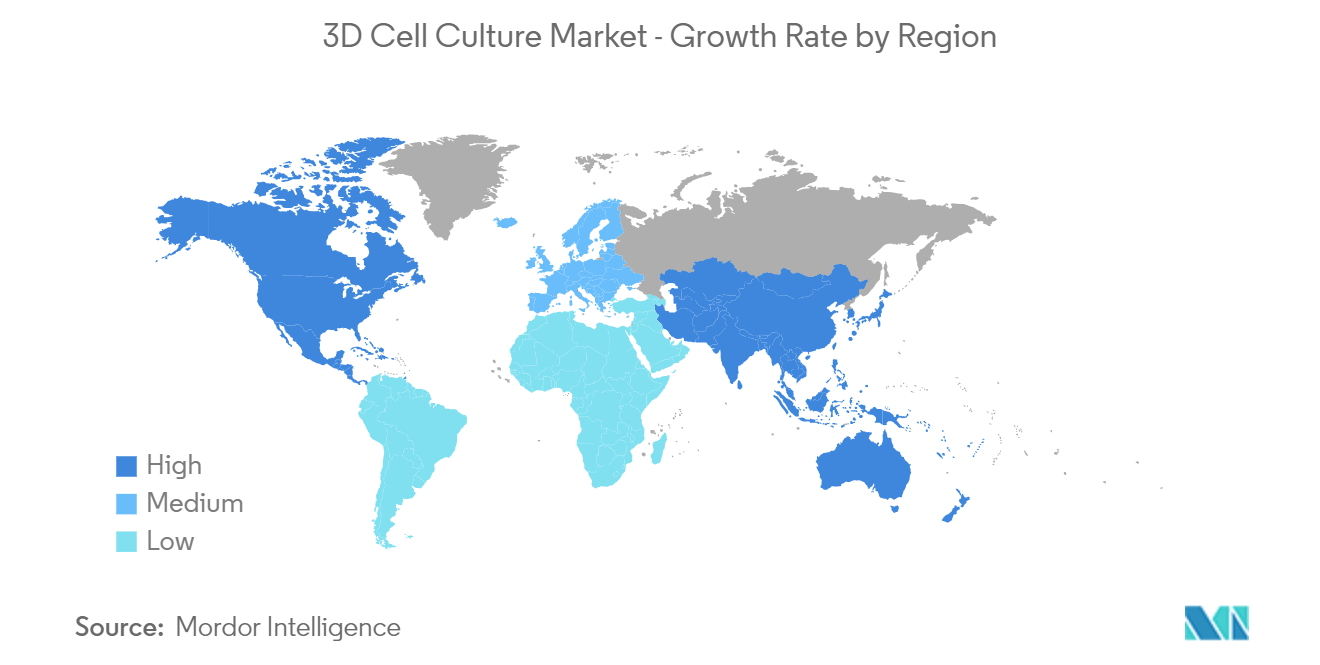Market Trends of Global 3D Cell Culture Industry
The Microchips Segment under Product is Expected to see Significant Growth Rate Over the Forecast Period
Microchips, often referred to as "organs-on-a-chip" or "microsystems," integrate microfluidic technologies with cultured cells in microfabricated 3D devices, utilizing various techniques from the microchip industry. Increasing R&D activities, technological advancements, and product launches are driving the segment's growth.
Technological advancements in microchips are boosting their adoption in R&D, propelling segment growth. For instance, in June 2024, Dynamic42, a leading organ-on-chip specialist from Jena, introduced the "DynamicOrgan System". This platform distinguishes itself by eliminating capital expenditure (capex) and adhering to industry standards, enabling users to utilize their existing equipment. The Developer Kit, a core component, includes biochips and consumables for organ model setups, ensuring seamless integration with current pump systems. For newcomers to organ-on-chip technology, Dynamic42 offers compatible pumps with the DynamicOrgan System. This system, designed for any standard cell culture environment, enables researchers to create realistic human organ models and explore various bioprocess studies. Thus, such technological advancements in microchips are likely to boost adoption and contribute to market growth during the forecast period.
Microchips boast a primary advantage: low-cost manufacturing. They facilitate testing across a broad spectrum of medicine dosages, a benefit poised to drive demand and significantly accelerate scientific research. Recently, organ chip technology has seen innovative applications in drug discovery. For instance, in May 2022, AIM Biotech's scientists introduced the idenTx organ-on-a-chip (OOAC) platform, emphasizing a user-friendly system for OOAC-based tissue culture assays. These platforms allow human cell co-culture, accurately replicating human tissues and disease states, surpassing traditional 2D tissue culture capabilities.
Moreover, strategic moves by industry players are set to bolster segment growth in the coming years. For example, in November 2024, InSphero teamed up with Chayon, a leading laboratory supplies firm in Seoul, South Korea. This partnership signifies InSphero's foray into the 3D Cell Culture market, allowing them to showcase their advanced Akura Plate Technology and Akura Organ-on-Chip Platforms to a broader audience.
Consequently, given the highlighted advantages and ongoing research in microchips, the market is poised for growth, especially in 3D cell culture technologies.

North America Holds Significant Share in the Market and Expected to Grow in Forecast Period
North America leads the global 3D cell culture market, with the United States as its primary contributor. Over recent years, the United States has heavily invested in research and development for 3D cell cultures, driving technological advancements. Many United States entities rank among the top patent applicants in the 3D cell culture arena, often developing their technologies in both the United States and Canada.
As the demand for organ transplants rises in the region, so does the need to replicate complex human physiological and pathological responses in vitro. In 2023, Canada performed 3,428 organ transplants, with 83% from deceased and 17% from living donors, as reported by the Canadian Institute for Health Information. These dynamics are poised to bolster the market in North America during the forecast period.
Industry collaborations and product launches are pivotal in driving the 3D cell culture market. Such partnerships enable companies to pool resources, enhance technological capabilities, and penetrate new markets, expediting innovation and adoption. For example, in April 2024, Sartorius teamed up with United States-based startup TheWell Bioscience to develop hydrogels and bioinks for advanced 3D cell models, streamlining drug discovery. In another instance, Curi Bio unveiled two platforms, Nautilus and Stringray, in September 2023, to support researchers in 2D and 3D cell culture studies, especially in electrophysiology.
Given the rising demand for organ transplants and the surge in product launches and strategic collaborations, the North American market is set for growth in the coming years.


